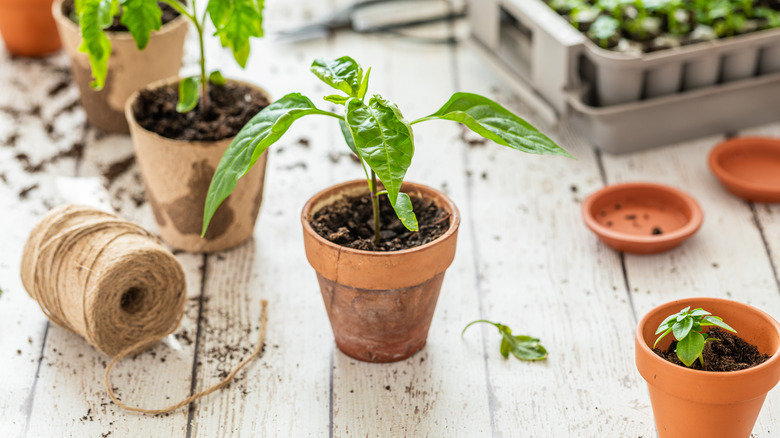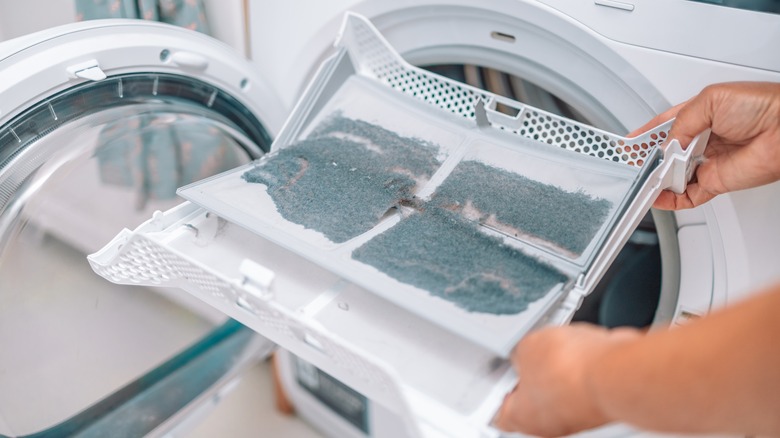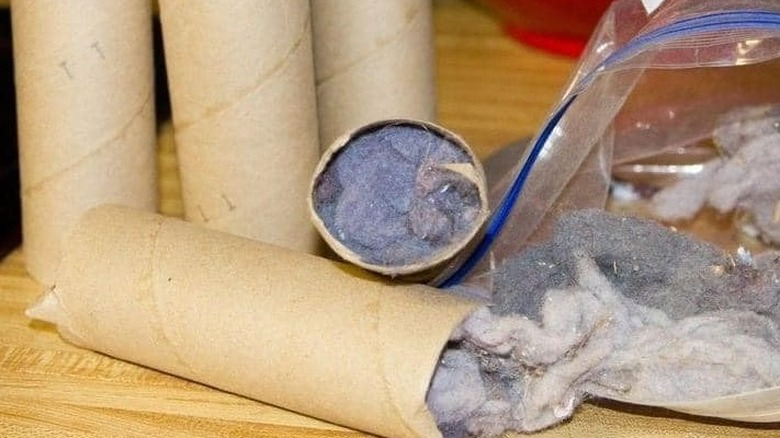Keep Soil From Falling Out Of Your Pot With This Dryer Lint Hack
Cleaning out the lint trap is a routine though necessary task that helps prevent household fires. While it may seem mundane and repetitive, it is an essential step in maintaining fire safety within your home. That being said, if you're a plant parent, it might be worth keeping the lint for other purposes. Instead of throwing it away whenever you do a load of laundry, you can repurpose lint for practical uses in your garden, kitchen, and around your home.
Dryer lint is composed of fibers from your clothes that accumulate after they have been dried in your dryer. When you remove lint from the lint trap, it usually comes off in strips or layers. While most people dispose of it, the fact that these fibers are collected from clean clothes means they are safe for upcycling.
If you plan to reuse your dryer lint, opt for using lint that's made primarily from clean, chemical-free fibers. For instance, lint is compostable and can help create nutrient-rich soil for your garden. Whether you play host to indoor or outdoor plant babies, composting with dryer lint is one way to help keep your plants happy.
It keeps your plants from losing their footing
Using dryer lint as a lining material in your plant pots serves more than one purpose. In addition to keeping the soil residing inside the pot and not falling out of the drainage hole, lint also prevents the soil from becoming overly saturated. As you water the plant, the lint absorbs any excess water that will be released to the plant's roots when the soil begins to dry out. It acts as a moisture-absorbing sponge while containing the soil. Using lint at the bottom of your plant pot is especially useful when you're taking care of plants that have an irregular watering schedule or require periodic drying spells between waterings.
However, it's important to consider the specific moisture preferences of each plant before using this particular technique. Plants like cacti, succulents, and those that prefer drier soil conditions may not thrive with this method. The retained moisture from the lint can potentially lead to issues like root rot. For such plants, it's best to use a well-draining soil mix with an appropriate medium that suits their specific environment.
Other creative uses for dryer lint
Dryer lint offers a range of practical uses, both indoors and outdoors. It can be collected in a sealed jar and used as a tinder for starting a fire in a fire pit, or stuffed into cardboard toilet paper rolls to create self-contained fire starters.
In gardening, dryer lint can serve as mulch around your plants. When dampened and spread out, dryer lint acts like a barrier that helps to prevent soil erosion. If it looks less than appealing, you can add a few decorative stones or large crystals that can act like landscaping fabric. The weight from the stones and coverage from the lint acts like a natural weed barrier.
This is one of the main reasons why it's so important to check and see if you were drying anything with synthetic fibers in it. Synthetics won't break down (or will take a very long time) and have the potential to release toxins into the soil.
Keeping a jar of lint is also a simple way to clean up oil spills in your garage. It can also be utilized for maintaining gardening tools in various ways. One approach is to apply coconut, linseed, or walnut oil to a clump of lint and rub it on wooden handles to prevent cracking. You can also use dryer lint to coat a thin layer on the metal parts after cleaning to prevent any rust from forming.


